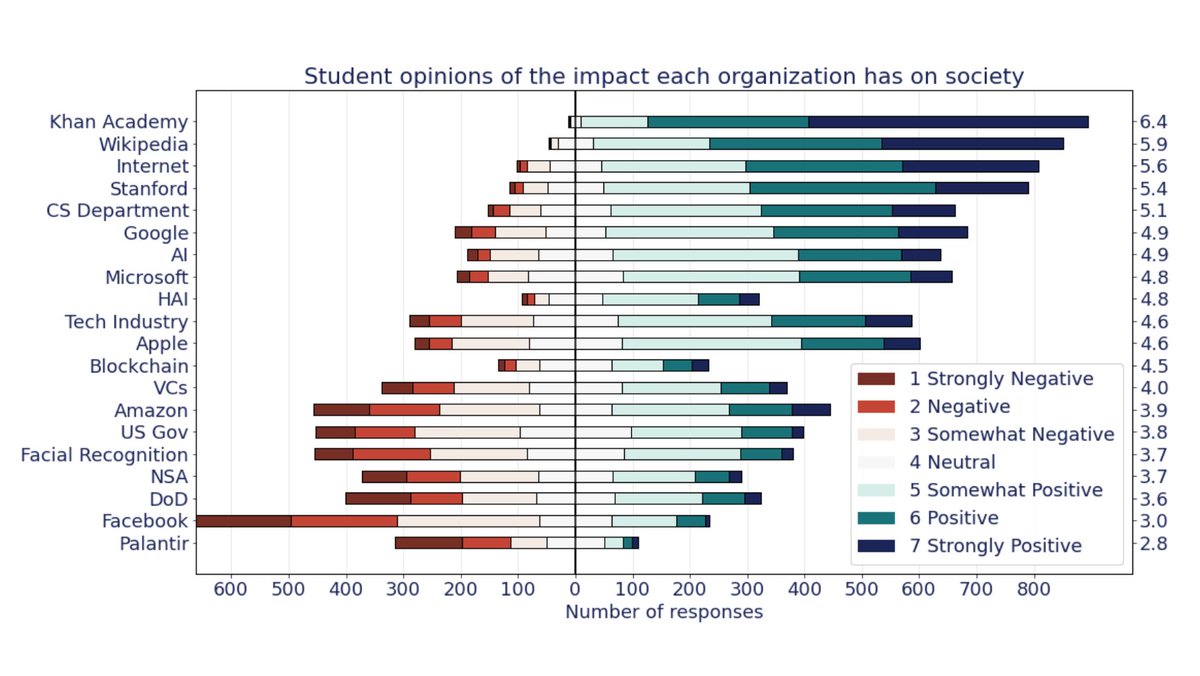Our final report has been released! Read about how Stanford's tech ecosystem has changed over the past decade 👇 techhistory.stanford.edu/report/
The report proposes over 40 recommendations for maintaining Stanford’s status as a top innovation and engineering hub, increasing diversity and inclusion in tech at Stanford, and creating more technology with ethics and the public interest in mind techhistory.stanford.edu/report/
The report documents how student interest in tech grew rapidly. In 2010, CS majors made up 5% of the senior class — today, it's 17% It also shows how recruitment for tech jobs increased & how changes to the career center made career fairs more accessible to small tech companies:
The report shares numerous statistics about how diversity increased among CS students, especially for women, but less so for CS faculty It also describes how Stanford’s grassroots startup culture became more institutionalized & how exposure to it varies by financial aid status
The report details how the ethical & societal implications of tech became a larger focus across Stanford Our survey of 900+ randomly selected undergrads revealed students' sentiments about what orgs and technologies have a positive or negative impact on society, on average
Finally, the report describes the growing concerns sparked by Stanford’s close ties with Silicon Valley, as well as the lack of transparency that prevented our report from scrutinizing many potential conflicts of interest
The report has only been live for 2 days, but some of the report's 40+ recommendations have already been followed For example, we called on @StanfordHAI to release its annual list of donors, which it had not done in its 2+ years of operation
Here's an archived version of HAI's donor list website, captured the day before we published our report on April 26: archive.is/5p9A5 And here's how HAI's donor list website looks today: hai.stanford.edu/about/fundrais… We commend HAI for improving their transparency
We spent over 9 months producing this report The final report is over 350 pages long, but the executive summary is a quick read — you can find both documents here: techhistory.stanford.edu/report/
We are immensely grateful to the section leads who made this report possible. These leads applied their significant experience within different parts of Stanford’s tech ecosystem to produce the final report You can read more about them here:
We are immensely grateful to the section leads who made this report possible. These leads applied their significant experience within different parts of Stanford’s tech ecosystem to produce the final report You can read more about them here:
The report also had 50+ contributors who added their unique perspectives, skills, and analysis to inform the report. We could not have produced such an extensive report without their time, energy, skills, and insights
Our team was fortunate to speak with over 80 individuals with expertise in different parts of Stanford's tech ecosystem. We are grateful to the individuals who shared their insights with our team and informed our analysis
The report was directed by @nrmarda and @juliaingram_, who launched this project in July 2020 Their work was informed by their experiences leading @StanfordPITLab & @StanfordDaily respectively. We are grateful for both of these organizations for contributing parts of the report








